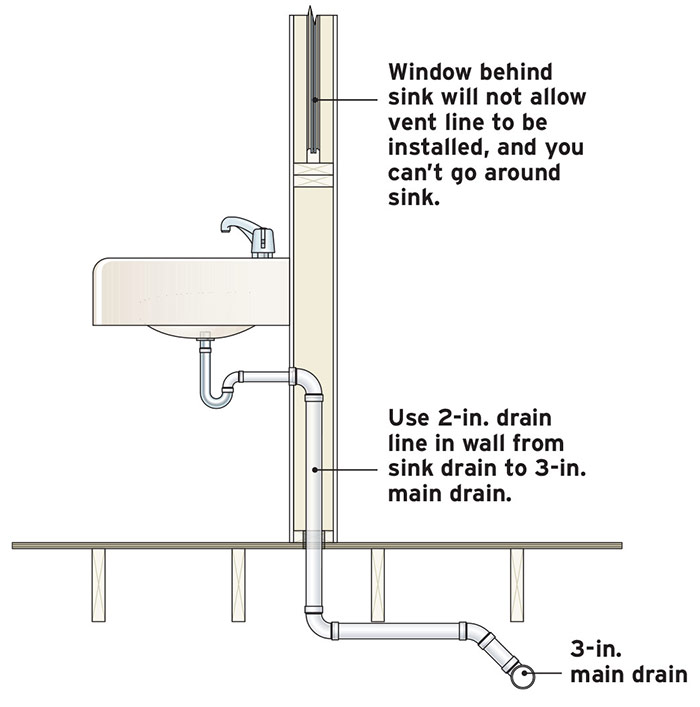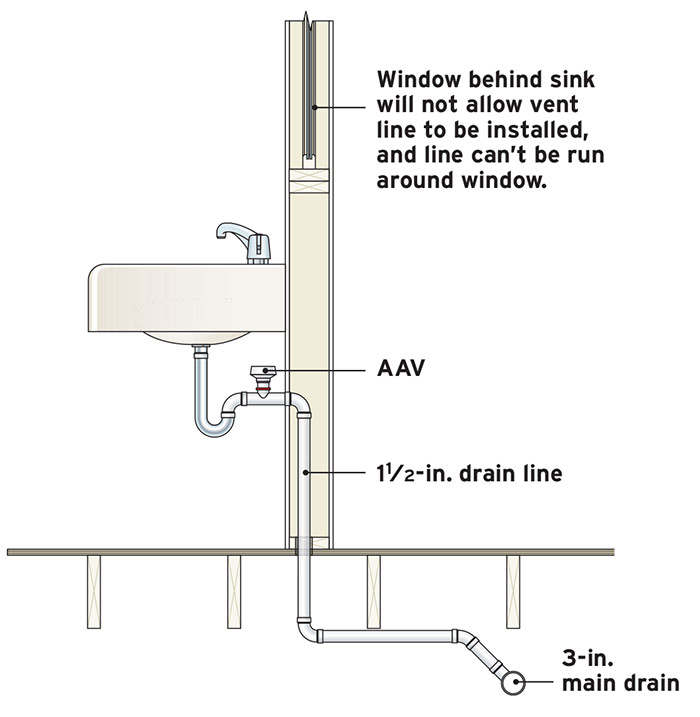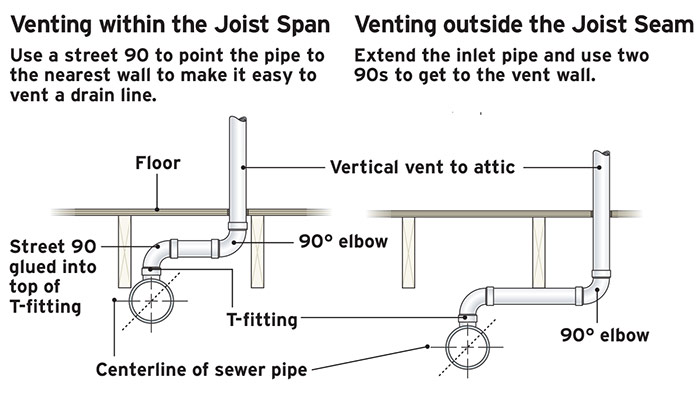Running Plumbing Vent Lines
Master plumber Rex Cauldwell presents a number of solutions to common problems experienced when running vent lines.
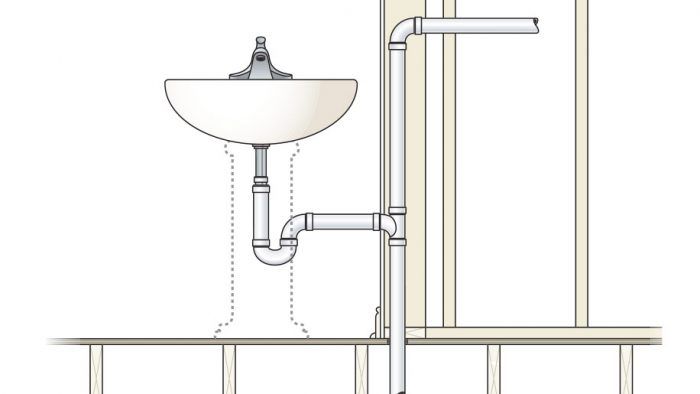
The purpose of a vent line is to prevent the water in the drain traps from being pulled out by a vacuum caused when rapidly running waste water flows down a pipe.
Vent line theory and technology have evolved substantially over the years. Early system design called for one vent for every fixture. Then we found out we could have a common vent system for several fixtures and vent them with a single pipe. Another innovation is the air admittance valve (AAV), which is a one-way diaphragm valve that gets installed just above a drain line and can replace individual vent lines running through the roof.
AAVs are accepted by all the accredited agencies but are still prohibited in some localities. If codes prohibit their use in your area, you’ll have to run an individual vent from a fixture or install drainpipe from the fixtures to a line sized to prohibit the formation of a vacuum. You can also create a very expensive loop of pipe as some do for an island drain in a kitchen. The illustrations on these pages demonstrate a number of solutions to common problems experienced when running vent lines.
Typical Old-Style Venting
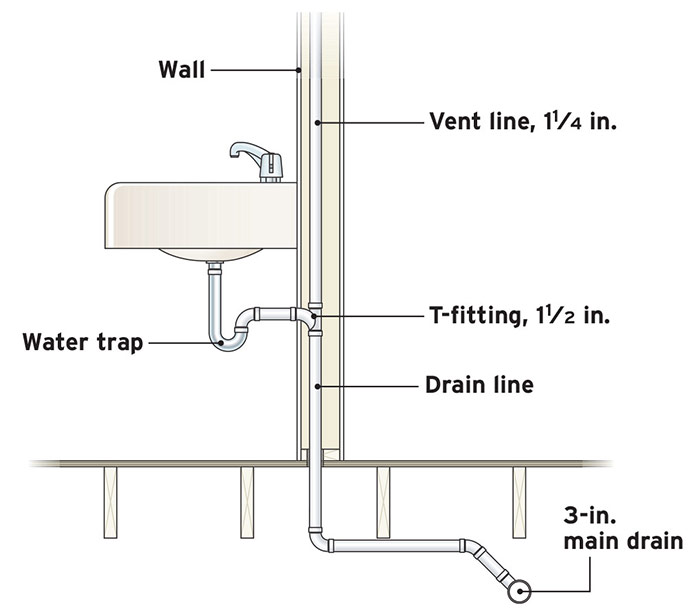
Working Around Obstructions
Installing a Fixture Vent
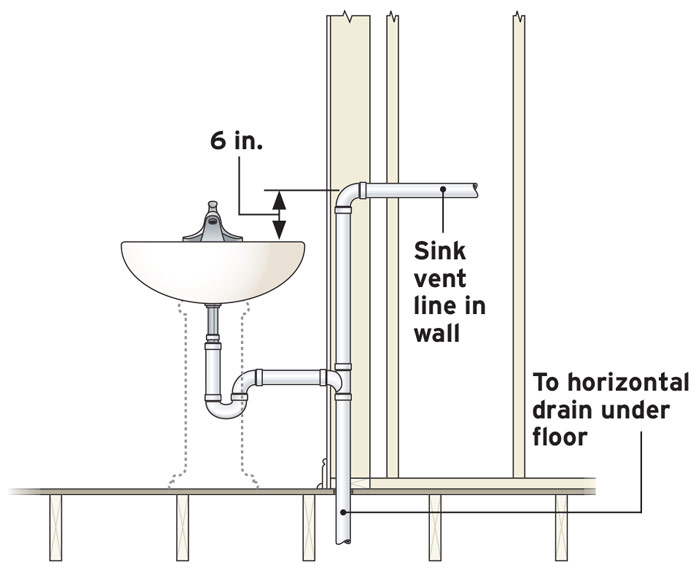
Venting with an Inverted T-Fitting
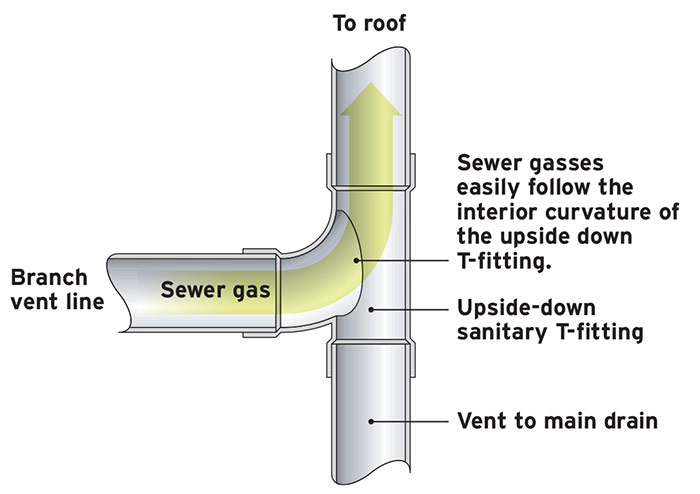
Venting in Joist Spans
Avoiding Vent Clogs

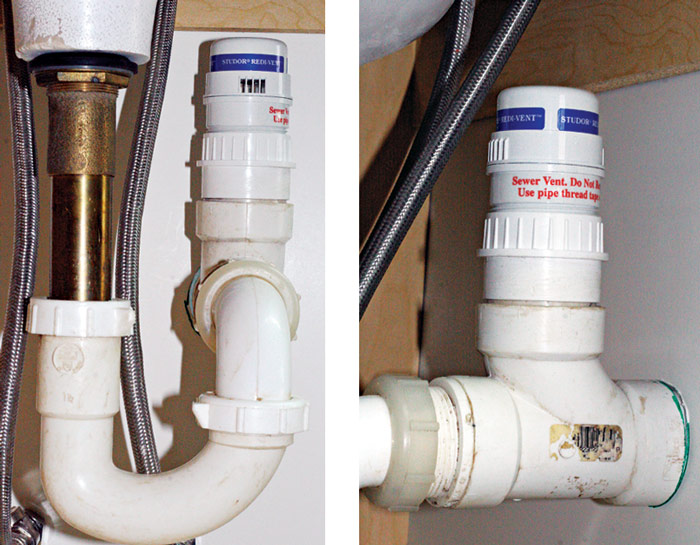
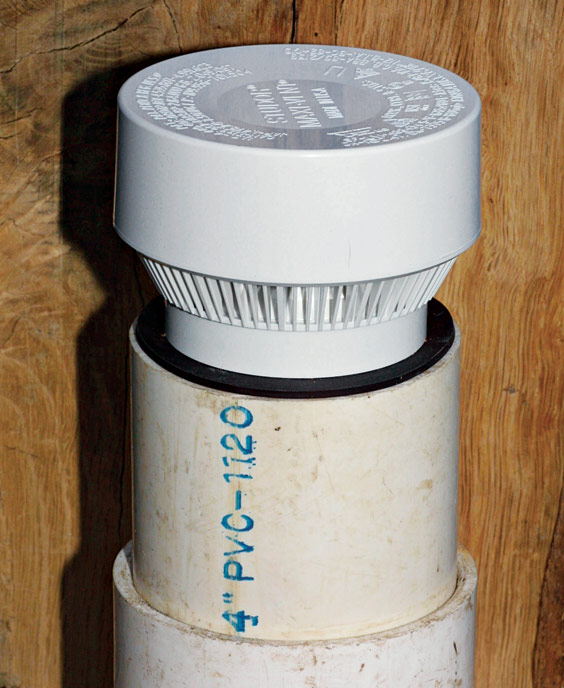
 Excerpted from Taunton’s Plumbing Complete by Rex Cauldwell.
Excerpted from Taunton’s Plumbing Complete by Rex Cauldwell.
Available at Amazon.com.

